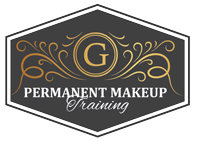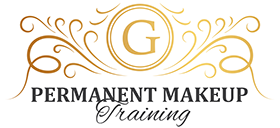
It’s no secret that Microblade eyebrows training courses are popping up all and even more so in South Africa. I am compelled to offer would-be students considering a #Microblade #Eyebrow #course informed advice, given my 20 years experience in the permanent makeup industry.
The first question that you should be asking yourself is…
Will I be equipped with the latest international techniques to produce perfect eyebrows?
Simply do a google search and you will be presented with tons of poorly designed and awful looking eyebrows – from skew, to ‘oops it slipped’, to picket fence strokes and not forgetting those that have turned every shade of grey, green, purple and red! Yes indeed it is very sad that many folk have not done sufficient research before deciding to sign up for a training class. We have re-trained a large number of students who simply did not gain sufficient knowledge or confidence to meet the high demand of producing beautiful flawless work.
Without exception, my students have commented “I truly never knew there was so much involved with learning how to do microblade or combo brows responsibly”.

We have been in the permanent makeup industry for 20 years and learned long ago to never base any decision on cost alone. Some of these shocking, poor quality courses are charging top dollar for 2-day training and yes, they speak lots of flowery talk on their websites, promising the earth – and more, but fail miserably to deliver high quality training and after training support.

When it comes down to nitty gritty – this, in my opinion, is what really matters:
- Do your research. Establish exactly how much experience your potential trainer really has at performing permanent makeup and/or microblade eyebrows. Surely one should not even begin to consider training anyone else, when you yourself are still practicing and trying to perfect your own strokes, flow and designs.
- What is covered in the syllabus? Amongst others, these topics are paramount to a good foundation:
- Creating realistic 3D Hairline Strokes
- Shaping eyebrows – taking into account face shape, natural brow bone and personality
- Study of Fitzpatrick Skin Tones
- Advanced Pigment & Colour selection
- BBP Treatment Protocols
- Preparation & Safe Methodologies
- Anaesthetics
- Sample templates
- Hands-on practice (including on live model)
- Marketing
- Photography
- Access to ongoing support
- Capacity of classes. It is impossible to give each student personal attention unless class size is limited to a maximum of 6 students.
- Opportunity to practice. Unless each candidate is given strong but gentle individual guidance and encouragement at the beginning stage of drawing strokes and shading (first on paper then on latex practice mats) – the student is less likely to progress through to delivering beautiful work to be proud of.
- Check out the trainer’s own work. Yes! Zoom in and scrutinise the quality of the trainer’s own work both ‘immediately after’ and ‘fully healed’ (6 weeks or more later). It is unrealistic to think for a minute that you will produce work of a better quality than your educator (although, thankfully there are a few exceptions to this sentiment). Make sure that the pics being used are the trainers own work (as professionals, we have all at one time or another had our pics stolen off the internet).
- What do past students say about the training course? Are they over the moon with the quality of the training received and producing fabulous work themselves? As part of your homework, scout around on social media.
- What do the trainer’s own clients say of their work – happy clients are a fundamental prerequisite for any successful business. Again social media will reveal all.
- Face shapes – does your course include how to design eyebrows to suit every face shape? Did you know that things like personality (amongst many others) are taken into consideration when designing an eyebrow? Yes indeed.
- Skin tones and choosing pigment colours. Why do you think there are so many FUGLY brows out there? Unless you receive the proper guidance on how to select the correct pigment colour to suit your client’s individual skin tone… need I say more?
- Quality of pigments. I have seen claims of some trainers saying that they supply FDA-approved pigments. The truth is that the FDA has NOT YET APPROVED ANY PIGMENT BRAND on the world market. This is a misleading claim made to a rather gullible public and I would encourage you not to use any pigment brands made in China. Make sure that the pigment brand you choose to use has enjoyed a great reputation with an excellent historical track record. Poor quality pigments could completely ruin your business.
- A large percentage of clients have very little, to absolutely no natural eyebrow hair – this is where 3D eyebrows come into their own. Rather than delivering single toned ‘flat’ brows, an experienced practitioner will be able to teach you how to create truly natural looking 3 dimensional eyebrows!
- Anaesthetics. Will your training include a dedicated section on the importance and use of the best anaesthetics and numbing protocols? How would you handle the situation if you applied a little too much pressure and your client suddenly started bleeding? Are you equipped with the knowledge on exactly how to handle these unforeseen and potentially disastrous dilemmas?
- What about follow up support after training? This is imperative to your success. Should you happen to be struggling – would there be opportunity for you to observe your trainer performing procedures? Would the trainer invite you to bring clients into the studio so that you could be coached 1-on-1 through a complete A to Z procedure or two, under close supervision and guidance? Many students lack that bit of extra confidence and the time invested to assist them on their way rewards me in leaps and bounds when one ultimately witnesses the student flourish and be successful!
- Certificates – are these handed out ‘stat’ at the end of each training session – or are you required to submit case studies as provide proof that you have ‘got’ it? Given the choice – I would prefer to receive a certificate of competence rather than a certificate of attendance. Wouldn’t you?
- Is your trainer up to date with the latest international techniques and trends? Do they attend regular training themselves (at least once a year)? Many claim to be self-professed ‘Masters’ – have you actually seen these certificates?
- Will your training include compliance with international health and safety laws and regulations? While sadly there are currently no laws governing the PMU industry in SA, this does not mean that these vitally important health and safety laws, infection control and safe sharps disposal protocols should be ignored. For your safety and the health and safety of your future clients – we all need to be bloodborne pathogen certified!
- Carefully check out the quality of the starter kits offered. These should include at least 2 sterilisable metal pen tools – so that while one pen is being properly sterilized, you may safely be using the second pen. Are samples of all other products used during your training included in your kit?
- Are you equipped with sufficient practice materials for after your course? If it was that easy to produce beautiful eyebrows – everyone would be doing it! You will certainly need plenty of material to practice with. ONGOING PRACTICE is essential to your success…
- My final pearl of advice is – look for someone who is deeply passionate and proud of their work – someone who unfailingly strives to produce perfection. This person’s enthusiasm will inspire you to produce your best possible work.






Please do not allow the wool to be pulled over you eyes, by those offering training purely for their own financial gain. Before long, you will find that you need to attend another class simply to catch up on all the important information and knowledge that you missed!
Should you find my advice useful, please feel free to share on your social media platforms. We invite you to take a look at our Social Media business pages and welcome any sincere inquiries.
Above all – Be your own kind of beautiful 🙂
About the author:
Gwendoline Johnston owns Permanent Makeup by Gwendoline and practices as a Permanent Make-up Specialist at her studios in Johannesburg and in Cape Town by arrangement. Gwendoline attained her Masters Certification from the American Institute of Intradermal Cosmetics in October 2013. She has kept fully up to date with ongoing study in the latest techniques and trends by obtaining over seventeen certificates and diplomas both locally in South Africa and internationally – attending Advanced Permanent Makeup training seminars, master classes, conferences and workshops.

Gwendoline’s vast experience attained over the past twenty years, together with a thorough understanding of skin and colour, has placed her in the confident position to teach, advise and perform in all areas of advanced permanent make-up, including para-medical applications. Permanent Makeup by Gwendoline is affiliated with local and international Plastic Surgeons, Dermatologists, Specialists and Medical Spa’s.
“Throughout my career, I have remained committed to delivering excellence. I have a deep passion for my craft and genuine care for my clients, which when teamed with the highest level of professionalism, my aim is to deliver unparalleled performance within the vibrant and ever-evolving world of permanent makeup.”
Quick links:




